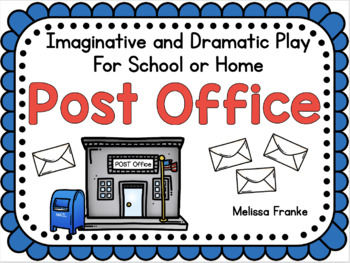Imaginative and Dramatic Play for School or Home Learning: Post Office
- PDF
Description
Imaginative and dramatic play has many benefits for children. As Mr. Rogers said, "Play is often talked about as if it were a relief from serious learning. But for children play is serious learning. Play is really the work of childhood."
This resource contains everything you need to set up a post office-themed imaginative play area, as well as information about learning benefits, academic skills taught and practiced, and alignment of activities to Common Core (and other) Standards.
•Instructions for setting up a post office, and suggestions for using the resources
•Signs, decorations, banners, and postal map
•Guidelines and models for letter-writing and envelope-addressing
•Labels for the classroom
•Vocabulary cards for the pocket chart
•Greeting cards for birthday, notes, thank you, congratulations, thinking of you
•Sample post cards with messages
•Blank post cards for children to write messages, with post card scenes like the beach, landmarks, animals, camping, airplane
•Labels for packages: Fragile, Rush, Handle with Care, This Side Up
•Letter-writing paper in full-sheet and half-sheet sizes
•Design your own stamp activity
•Address Book with addresses for sending real letters to characters and authors
•Messages for Letter-Writers Book full of sample messages for letters
•Questions for Letter-Writers Book full of sample questions for letters





